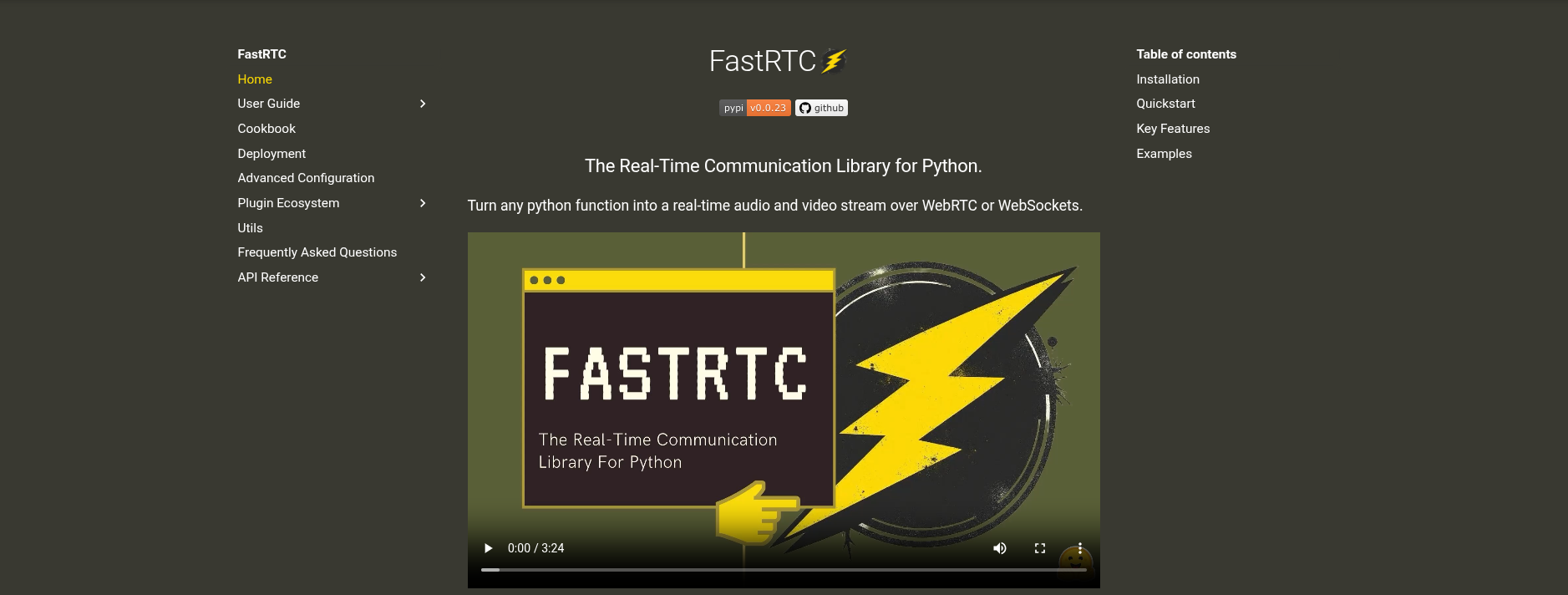Fastrtc
Python library for real-time audio and video streaming with WebRTC.

About Fastrtc
FastRTC: Real-Time Communication Library for Python
FastRTC is an open-source Python library that transforms any Python function into a real-time audio or video stream using WebRTC or WebSockets. Designed for flexibility and rapid prototyping, FastRTC makes it easy to build, test, and deploy real-time communication applications, including AI voice and video agents, directly from your Python code.
Key Features
Real-Time Audio and Video Streaming: Stream audio or video in real time over WebRTC or WebSockets by simply wrapping your Python functions.
Automatic Voice Detection and Turn-Taking: Built-in pause detection and voice activity detection, so you can focus on your application logic.
Integrated Speech-to-Text and Text-to-Speech: Optional extras for seamless speech recognition and synthesis within your streams.
Instant UI with Gradio: Launch a built-in, WebRTC-enabled UI for easy testing and sharing using
.ui.launch().WebRTC and WebSocket Endpoints: Easily mount your stream on a FastAPI app to provide endpoints for custom frontends.
Temporary Telephone Numbers: Use the
.fastphone()method to get a free, temporary phone number for calling into your stream (Hugging Face token required).Customizable and Extensible: Easily integrate with production systems, extend with your own logic, and connect to external AI models or APIs.
Video and Image Processing: Supports real-time video and image streams for applications like object detection and video manipulation.
How It Works
Define a Handler: Write a Python function to process audio, video, or images.
Create a Stream: Wrap your handler with the
Streamclass, specifying the modality (audio or video) and mode.Choose an Interface:
Launch a built-in UI for rapid prototyping.
Mount on a FastAPI app for production use.
Enable phone call integration for voice streams.
Add Extras: Optionally install and use built-in speech-to-text, text-to-speech, or voice activity detection modules.
Example Use Cases
Voice and video chatbots
Real-time AI voice assistants
Interactive video processing (e.g., object detection, video filters)
Voice-enabled telephony applications
Custom audio or video pipelines for research and prototyping
Getting Started
Website: fastrtc.org
Documentation & User Guide: fastrtc.org/user-guide
GitHub Repository: github.com/fastrtc/fastrtc
Cookbook & Examples: fastrtc.org/cookbook
FastRTC is ideal for developers and researchers who want to rapidly build, test, and deploy real-time audio and video applications in Python, with minimal setup and maximum flexibility.